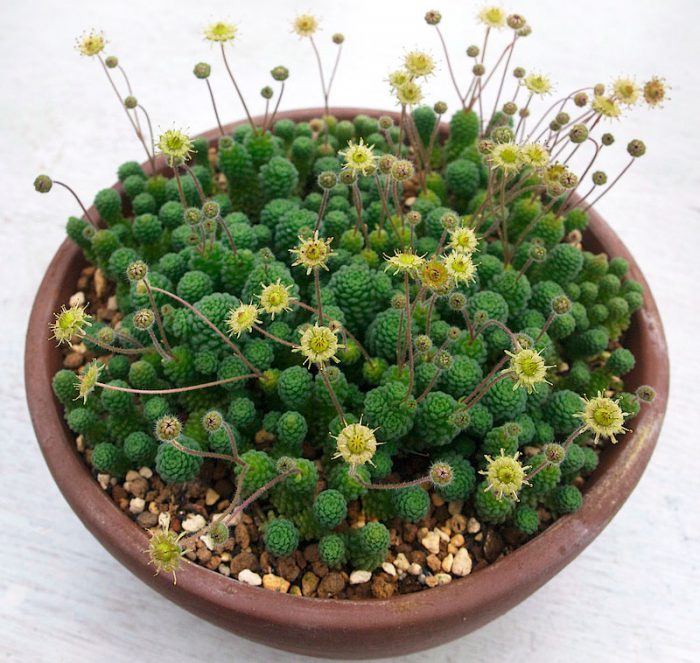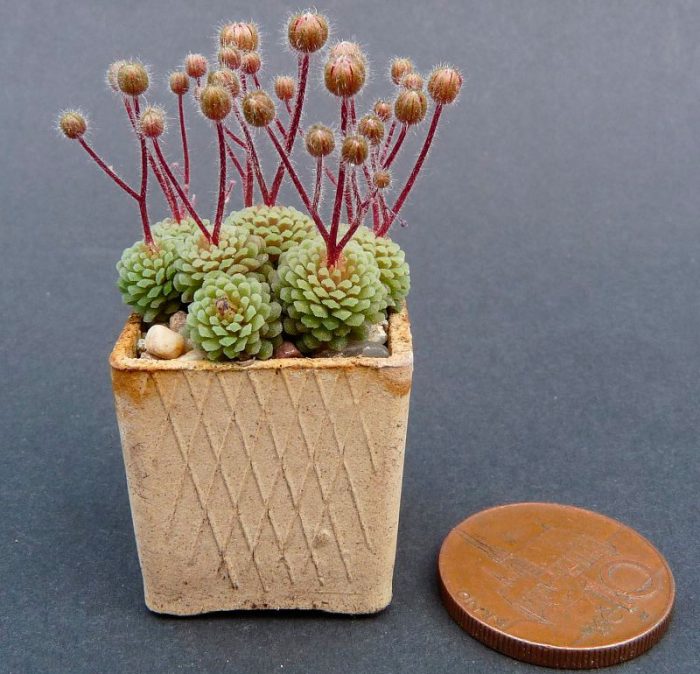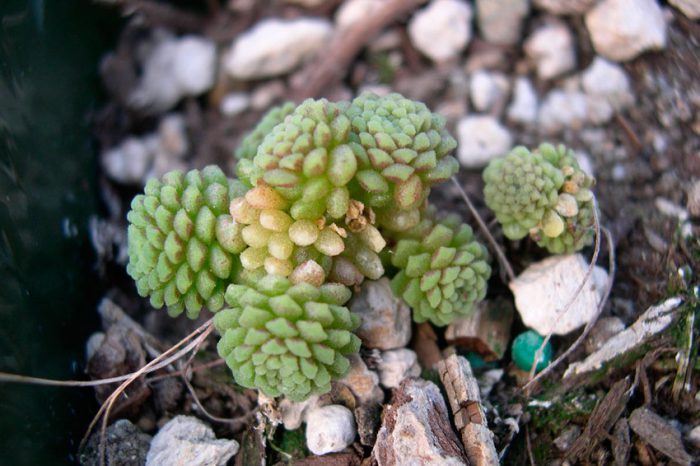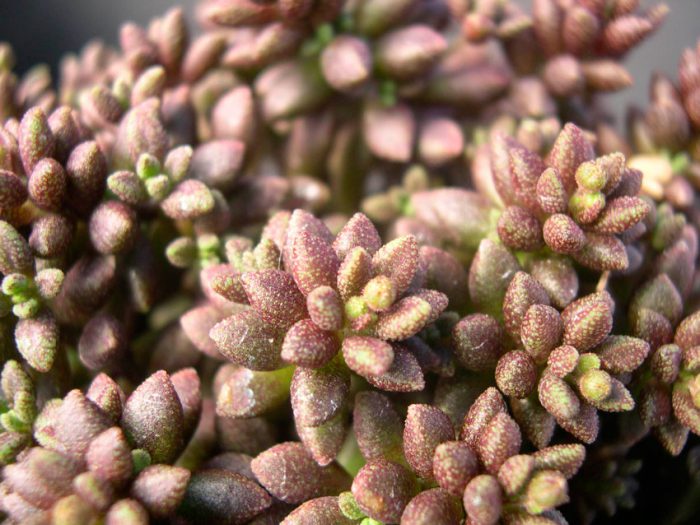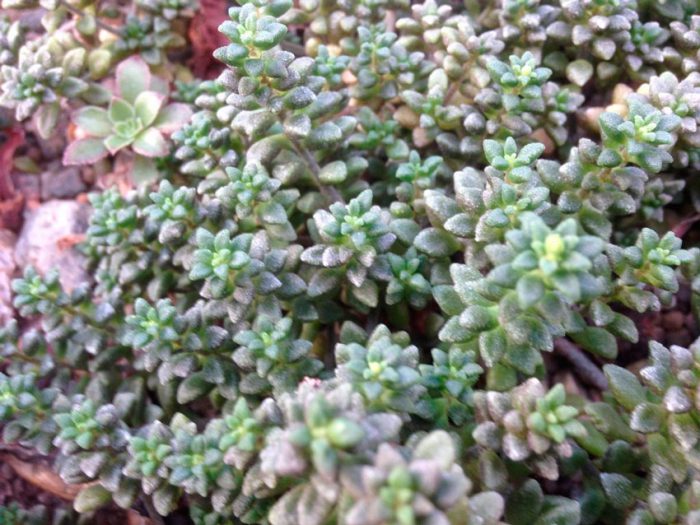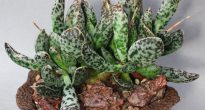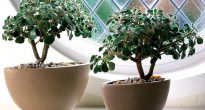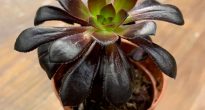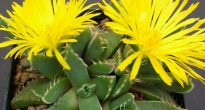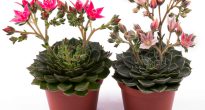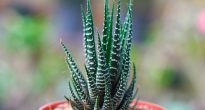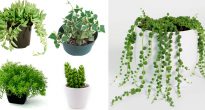Succulent monantes (Monanthes) is a perennial and is directly related to the family Crassulaceae. He is originally from the Canary Islands. The name monantes is formed from 2 words of the Greek language: "mono" - "one", "anthus" - "flower".
Monantes is represented by compact shrubs or perennial herbaceous plants. Short shoots can be creeping or erect, and at their tops are leafy rosettes. They can create cushion-like, rather dense curtains.
Fleshy, juicy leaves are located opposite, but more often - alternately. They have a clavate or ovoid shape. The inflorescence is in the form of a brush or umbrella. Small racemose inflorescences consist of 6-8-membered flowers, which are colored brownish-green, light green or light pink. The flowers have rather long pedicels.
Caring for monantes at home
Illumination
It grows and develops normally only in good lighting. It is best to prefer south windows for placement. If there is little light, then the leaf rosettes lose their density, and with it their spectacular appearance. In winter, Monantes also needs good lighting.
Temperature regime
In spring and summer, it feels quite comfortable at room temperature. At the same time, it tolerates heat quite normally in the summer. In winter, it is recommended to rearrange it in a well-lit, cool (from 10 to 12 degrees) place. If the wintering is warm, then this will lead to massive yellowing and death of leaves.
Humidity
Feels normal at low air humidity. There is no need to further increase it.
How to water
Watering should be moderate in spring and summer. Watering should only be done after the potted substrate has dried to the very bottom. With the onset of autumn, watering is reduced. In winter, it should be scarce, but the leaves should not be allowed to dry.
Top dressing
Monantes is fertilized very rarely, or rather, 1 or 2 times a year. For this, fertilizer is used for cacti.
Transplant features
Transplanting is carried out only if necessary, for example, when the capacity becomes small for an overgrown plant. Suitable soil should be loose and light and contain a lot of coarse sand.Combine sheet earth, sand and small pieces of charcoal to prepare the soil mixture. Choose a low and wide planting container. Don't forget to make a good drainage layer at the bottom of the pot.
Reproduction methods
Can be propagated by cuttings, layering or dividing overgrown bushes. In this case, you can divide the bush at any time.
Cut off the top of the shoot with a leaf rosette for a cutting. The cuttings are dried in the open air for several hours. For rooting, use pots filled with slightly damp peat, on top of which a layer of clean sand should be placed. For rooting, cuttings are removed in a bright and warm place. After rooting, they are seated several pieces in 1 small and flat container.
It is recommended to root the cuttings in the spring, when the period of intensive plant growth begins. It is recommended to separate the layers only on a plant with a large number of outlets that hang from the container. The soil mixture is poured into small containers and placed near the mother bush. Leaf rosettes must be placed on the surface of the soil of this container and fixed with a wire. When the rosettes take root, they are carefully separated from the mother bush.
The overgrown specimen must be pulled out of the container and carefully divided into several parts of the earthen lump. Delenki are seated in separate pots and put away in a well-lit place.
Diseases and pests
Differs in resistance to diseases.
The plant can settle mealybug... At the same time, whitish sticky cotton-like lumps form in the leaf sinuses and on the shoots, and the bush itself stops growing. A spider mite can also settle. In this case, a thin cobweb forms on the shoots, and the leaf plates turn yellow.
Possible difficulties
- Leaf plates wither and shrink - poor watering.
- The leaves that are in the rosettes below turn yellow and die off - overflow.
- There are dry brown spots on the foliage surface - burns caused by direct sunlight.
- The leaves become faded, and the stems - elongated, sockets lose their spectacular appearance - poor lighting.
Main types
Monanthes polyphylla
Such a herbaceous plant is a perennial. It is capable of forming rather dense cushion-shaped curtains. At the tops of the branches there are dense leafy rosettes of a conical or ovoid shape, the diameter of which varies from 1 to 1.5 centimeters. Fleshy, juicy wedge-shaped leaves are placed very tightly (their arrangement is similar to tiles). The leaves reach 0.6–0.8 millimeters in length and ―0.2–0.25 millimeters in width. There are papillae at the tip of the leaf plate and along the edges. The peduncle is 8 centimeters long and grows from the central part of the leaf outlet. The brush-shaped inflorescence bears 4 to 8 flowers. 6-8-membered flowers are 1 cm in diameter, and they are colored brownish-green or pale green.
Monanthes muralis
This compact shrub is a perennial. Its height does not exceed 8 centimeters. Juicy, alternately located leaves have a lanceolate-ovate shape with a blunt end. They reach 0.7 millimeters in length and 0.3–0.4 millimeters in width. Inflorescences bear 3 to 7 pale green flowers.
Monanthes thickened (Monanthes subcrassicaulis)
This herbaceous shrub is a perennial. It is capable of forming very dense rugs and tussocks. Dense leafy rosettes with a diameter of 1 centimeter are located at the tops of the stems. Dark green, glossy, alternate leaflets overlap each other and have a clavate or wedge-shaped shape. In length, they can reach from 0.7 to 1 centimeter. The peduncle reaches a length of 3-4 centimeters and grows from the central part of the leaf rosette.The inflorescence bears from 1 to 5 purple flowers one centimeter in diameter.
Monanthes amydros
This herbaceous compact shrub is also a perennial. There are leaf rosettes at the tops of strongly branching shoots. Inversely ovate leaflets with pointed or rounded tops reach 0.4 to 0.7 centimeters in length, and 0.2 to 0.4 centimeters in width. The apical inflorescences in the form of brushes bear from 1 to 5 flowers, and they grow from the central part of the leaf rosettes. The diameter of the reddish-brown or pale green flowers is 1-1.5 centimeters.

